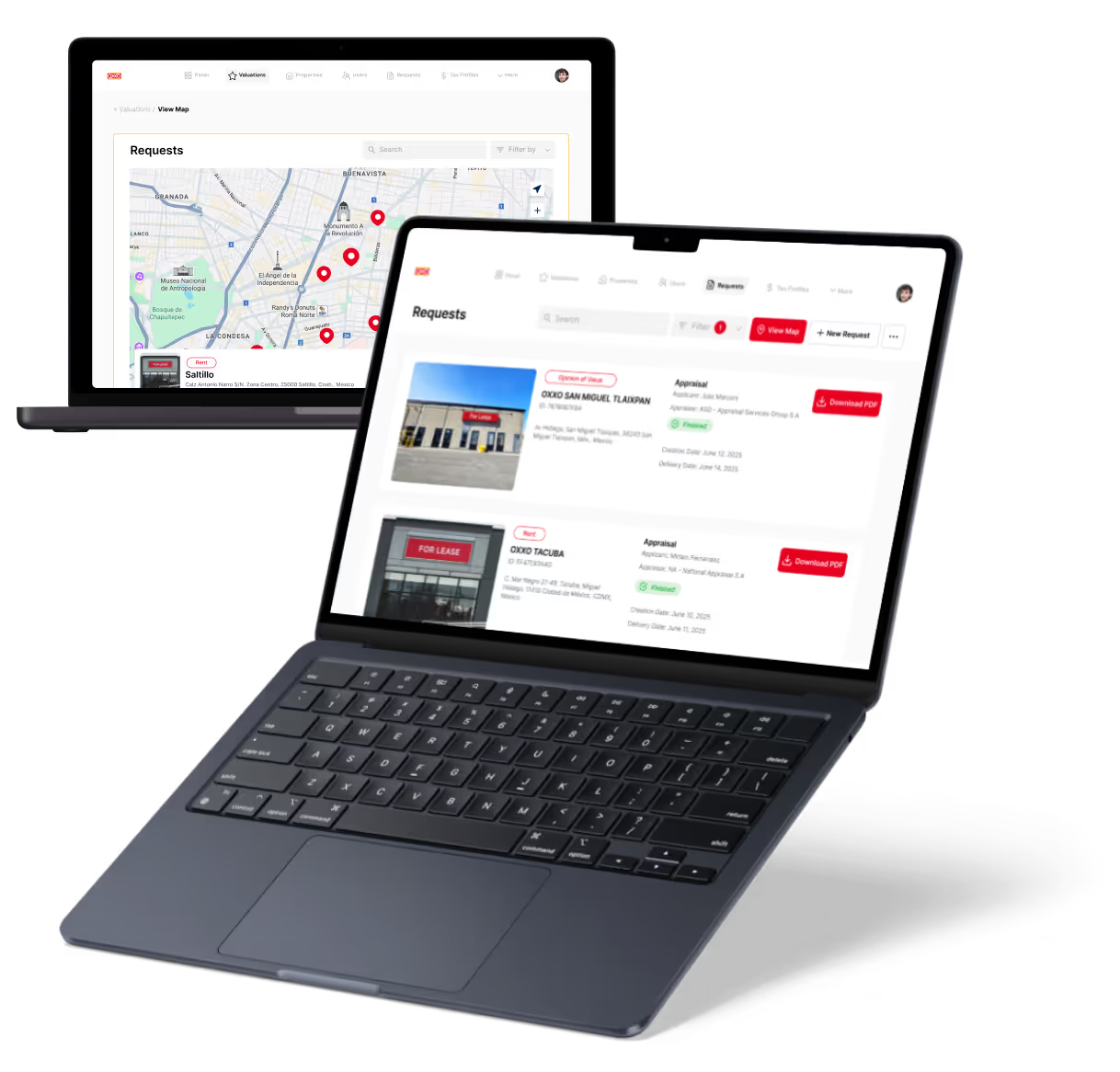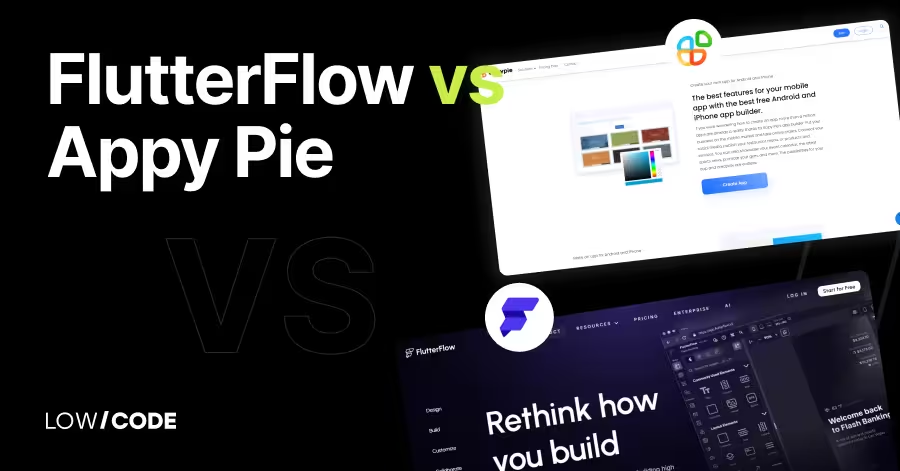FlutterFlow vs Bravo Studio | 8 Factors to Decide the Best One
14 min
read
Compare FlutterFlow vs Bravo Studio across 8 key factors like ease of use, design, backend, and publishing to choose the best no-code tool for your mobile app
.avif)
The demand for mobile apps is exploding, with over 255 billion app downloads recorded in 2023 alone. But building a quality app no longer requires coding from scratch. Tools like FlutterFlow and Bravo Studio are changing the game for designers, developers, and founders alike.
Both platforms let you build mobile apps visually, but they take very different paths. FlutterFlow offers deep control and developer-level features, while Bravo Studio makes it easy to turn Figma designs into real, working apps.
If you're deciding between the two, this guide compares their ease of use, backend options, design freedom, and more—so you can pick the right tool for your project without wasting time. Let’s explore how they stack up.
Quick Comparison Table - FlutterFlow vs Bravo Studio
1. What’s the core difference between FlutterFlow vs Bravo Studio?
The core difference between FlutterFlow and Bravo Studio lies in how much control you get and how apps are built.
FlutterFlow is a visual builder based on Google’s Flutter framework. It gives you more freedom to design complex mobile apps with custom logic, animations, and backend integration. You can also export clean Flutter code and work with developers if needed.
Bravo Studio focuses on turning Figma designs into working mobile apps. It’s more design-first and great for creating simple apps quickly without deep logic. You connect screens to data sources like Airtable or REST APIs, but customization is limited compared to FlutterFlow.
So, if you want full app-building power and code access, go with FlutterFlow. If your goal is to launch a working app from your Figma design fast, Bravo Studio is the easier choice.
2. Ease of Use
Let’s start with how easy each platform is for beginners and pros alike.
Is FlutterFlow beginner-friendly?
FlutterFlow has a clean interface, but the learning curve can be steep for beginners. It works like a visual IDE with drag-and-drop tools, logic builders, and UI layers. If you’re new to app development, it may take time to understand how widgets, data binding, and navigation work.
However, FlutterFlow provides a helpful onboarding process with videos and templates. The drag-and-drop editor supports real-time previews and quick changes, which helps you learn as you go. While not as simple as some no-code tools, it gives you more power once you get used to the system.
Developers and technical users will feel comfortable, and even beginners can build solid apps with enough time and practice.
Can designers easily use Bravo Studio?
Yes, Bravo Studio is perfect for designers who already use Figma. Instead of building interfaces inside Bravo, you design your screens in Figma and import them with just one click. The process is smooth, and you don’t need to learn new layout tools.
Bravo turns your Figma layers into real app screens. You can then connect them to data using Airtable or REST APIs and add mobile features like push notifications or camera access.
The Bravo interface is simple, with no heavy menus or coding. It also works with Bravo Vision, so you can preview your app live. For non-developers, this is a fast and intuitive way to bring a design to life. If you know how to design in Figma, you already know how to build with Bravo.
Read more about:
3. Design and Customization Options
Now let’s compare how much control you get over your app’s design.
What kind of design freedom does FlutterFlow offer?
FlutterFlow offers full design control, similar to writing code in Flutter, but visually. You can build pixel-perfect layouts, manage padding, margins, and alignment with precision. You also get access to custom fonts, colors, gradients, and components. Animations and transitions are easy to add through its visual editor. For responsive design, you can define layout behavior across devices.
FlutterFlow even lets you insert custom code or actions if needed. This makes it a powerful choice for teams that want full flexibility without coding everything by hand. If you need detailed design changes or advanced UI interactions, FlutterFlow gives you the tools to make that happen, exactly how you want it.
How flexible is Bravo Studio for designers?
Bravo Studio uses your Figma designs as the base for the app. You control the entire layout inside Figma, including fonts, spacing, and colors. After importing the designs, you can tag elements like buttons, inputs, or containers to add functionality. Bravo handles mobile responsiveness automatically and allows visual updates whenever you update the Figma file.
However, once in Bravo, layout editing is limited. You can’t drag elements around like in other builders. That said, it’s perfect for designers who want to build beautiful apps without messing up their layout. Just design in Figma and sync it. For simple or medium apps with strong visuals, Bravo Studio offers a fast and effective way to launch.
Read more about:
4. Backend & Integrations
Here’s what you get when connecting to databases, APIs, or third-party tools.
What backend options does FlutterFlow support?
FlutterFlow supports a strong set of backend tools. It works natively with Firebase, which means you can use Firestore as your database, set up user authentication, and store files easily. You can also connect to REST APIs for external data and use custom functions to process logic. For advanced features, FlutterFlow lets you write backend code or link to third-party services using webhooks.
This makes it possible to build real-time chat, user dashboards, and apps that scale. The platform also supports Firestore rules for data security. If you need more than just a frontend and want full app logic, FlutterFlow gives you everything you need to handle both client-side and backend workflows.
What integrations are possible with Bravo Studio?
Bravo Studio focuses on easy, no-code integrations. It supports Airtable, Xano, REST APIs, and Postman collections. You connect data to your app using a visual interface. Each screen element is mapped to the API fields you set. You can also trigger actions like POST requests or form submissions. Bravo includes Bravo Tags, which let you add special behavior to Figma layers.
For example, you can use tags to connect buttons, enable login, or show user-specific data. You preview the results live using Bravo Vision. This makes testing easy, even without writing code. While it’s not built for complex logic or deep backend work, Bravo is great for basic integrations and data syncing.
5. App Features and Capabilities
Let’s look at the real power—features you can build with both platforms.
What can you build with FlutterFlow?
FlutterFlow lets you build full-featured mobile apps with complex logic. You can add push notifications, custom animations, form validation, multi-step workflows, and real-time chat. You can also use Firebase to add user login, database sync, and secure authentication. FlutterFlow supports conditional logic, repeated lists, tab views, and drag-and-drop components for faster UI building.
Apps can be exported to iOS, Android, and the web. Developers can also download the Flutter code, making it easier to collaborate or add advanced logic later. Whether you’re building a simple tool or a fully functional product, FlutterFlow supports powerful features and performance for both startup MVPs and scale-ready apps.
What features can you add in Bravo Studio?
Bravo Studio focuses on building native-feeling mobile apps with key mobile features. You can add push notifications, in-app purchases, GPS location, social login, camera access, and file uploads. It also supports deep linking and user authentication using third-party services. You can connect the app to a backend like Airtable or Xano to manage content and users.
While Bravo doesn’t support deep app logic or custom scripting, it’s fast and effective for design-driven mobile apps. It’s great for launching MVPs, product showcases, internal tools, or client-facing apps that need to look and feel native. Everything works through tagging elements in Figma and linking them inside Bravo.
Read more about:
6. Performance and Scalability
Performance matters as your app grows—here’s how each platform handles it.
How does FlutterFlow perform for complex apps?
FlutterFlow apps are built using Flutter, which is known for its fast performance and native-like feel. You can control how data loads, how screens transition, and how animations work. Since it connects directly with Firebase or REST APIs, you can build scalable apps with real-time data and user interactions.
FlutterFlow also allows developers to optimize performance by editing the exported code. This makes it suitable for large apps that may need advanced functions, deep navigation layers, or integrations with heavy data loads. If you plan to scale or build enterprise-level apps, FlutterFlow can grow with your project.
Can Bravo Studio handle large or complex apps?
Bravo Studio is designed more for simple to medium apps. It performs well for apps with clean designs and moderate data loads, like MVPs, event apps, or client portals. Because the logic is handled outside Bravo through external APIs or Airtable, performance depends on how well your data sources are managed.
It’s not ideal for complex apps that require deep backend logic, heavy animation, or multi-user interactions. Bravo works best for projects with clear UI, simple workflows, and lightweight functionality. If your app stays within these limits, performance will be smooth and reliable.
7. App Publishing and Exports
Getting your app to the App Store or Play Store—what’s easier?
Can FlutterFlow export to multiple platforms?
Yes, FlutterFlow allows you to export your app as code or build directly for iOS, Android, and web. You can download the Flutter code and make edits if needed. For non-developers, FlutterFlow offers a one-click build feature using Codemagic, which packages your app for submission to Google Play or the App Store.
You can also deploy as a web app, making it useful for multi-platform use cases. This flexibility is a major advantage if you want full control or plan to hire developers later.
How does app publishing work in Bravo Studio?
Bravo Studio makes publishing simple. After finishing your app, you can generate APK (Android) or IPA (iOS) files using Bravo’s build service. You don’t need coding knowledge to submit the app to the stores. Bravo Vision lets you preview your app live on your phone before publishing.
You can test changes quickly and update your app by syncing the Figma design. This makes it easy for non-tech users to launch apps fast. However, Bravo apps are mobile-only—you can’t publish them as web apps. It’s a smooth process if you’re only targeting mobile stores.
Read more about:
8. When to Choose FlutterFlow vs Bravo Studio
Not every tool fits everyone—here’s how to pick the right one.
When should you choose FlutterFlow?
Choose FlutterFlow if you want full control over your mobile app's design, logic, and backend. It’s ideal for developers, technical founders, or startups building apps with login, real-time features, or multi-step workflows. If your project needs to scale or if you plan to hand off code to a developer, FlutterFlow is the better choice.
You can export code, fine-tune performance, and build for mobile or web. It works well for apps like marketplaces, fintech tools, education platforms, or anything with custom features. While it takes more time to learn, the flexibility and power you get are worth it for more advanced apps.
When should you go with Bravo Studio?
Choose Bravo Studio if you're a designer or non-developer who wants to launch a mobile app quickly from a Figma design. It’s best for MVPs, product demos, internal apps, or client portals. Bravo makes it easy to connect screens to data, add mobile features like camera or push notifications, and publish to app stores without writing code.
You don't need to manage layout inside Bravo—just sync from Figma and go live. It’s the fastest way to turn a UI design into a working mobile app. If simplicity and speed matter more than deep logic, Bravo Studio is a smart pick.
Created on
June 29, 2025
. Last updated on
December 11, 2025
.

FAQs
Can FlutterFlow be used without coding skills?
Is Bravo Studio only for Figma users?
Which is better for building web apps?
Does FlutterFlow support push notifications?
Can Bravo Studio apps work offline?
Is there a free plan for both platforms?







%20(Custom).avif)








